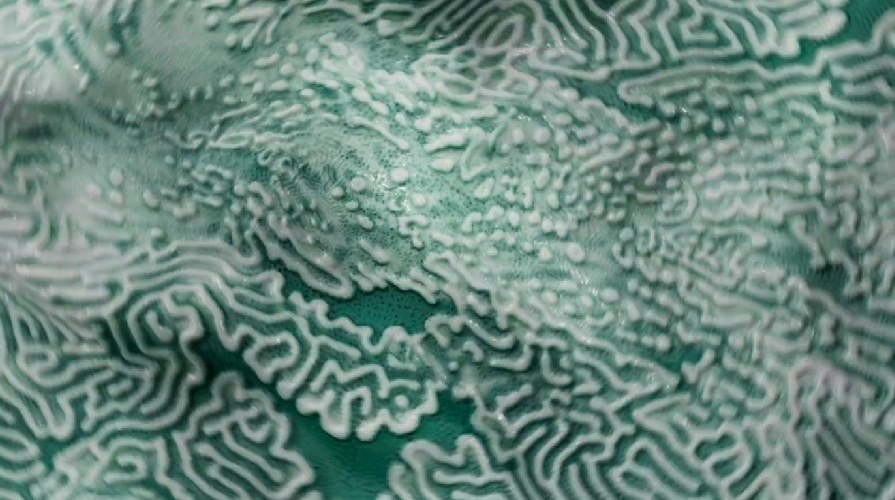| On this page |
Note
Texturing and slap comp are now production ready.
Slap comp ¶
-
Adds slap comp support in the Render Gallery and LOP Vulkan Viewport (see Using slap comp in the Render Gallery for more information).
Cables ¶
Cables let you braid multiple layer wires together so you can wire them into other nodes as one input. These layers remain separate sources that you can later unbraid. The following are the new nodes for cables:
Baking ¶
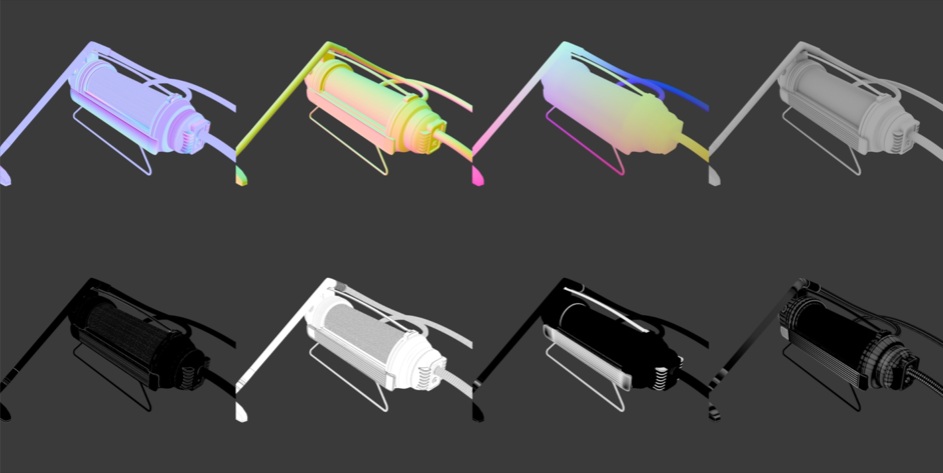
-
New Bake Geometry Textures COP that transfers geometry data from one mesh to another.
-
New Ray Trace COP that intersects rays against the incoming geometry, outputting information about the first intersection.
-
Adds the UDIM parameter to the COP Network, COP Network SOP, network toolbar, and context option. This lets you set a default global UDIM that replaces any current <UDIM> token in the filename.
New COP nodes ¶
-
New Pyro COPs that let you add fire effects such as smoke to your Copernicus scene. See the Pyro and Flip What’s new for more information.
-
New Lens Distort COP that adds distortion to a layer based on OpenCV coefficients.
-
New Corner Pin COP that directly sets the corner positions of a layer with respect to a reference layer.
-
New Scatter on Curves COP that scatters stamps along a curve in an image.
-
New Swirl COP that twists an image layer into a spiral shape.
-
New Live Video COP that captures images from a live video source.
-
New Rasterize Curves and Rasterize Volume COPs.
-
New Reaction-Diffusion Solver, which is a 2D simulation of chemicals reacting and diffusing. The Reaction-Diffusion Block Begin COP and Reaction-Diffusion Block End COP are the start and end of the simulation block.
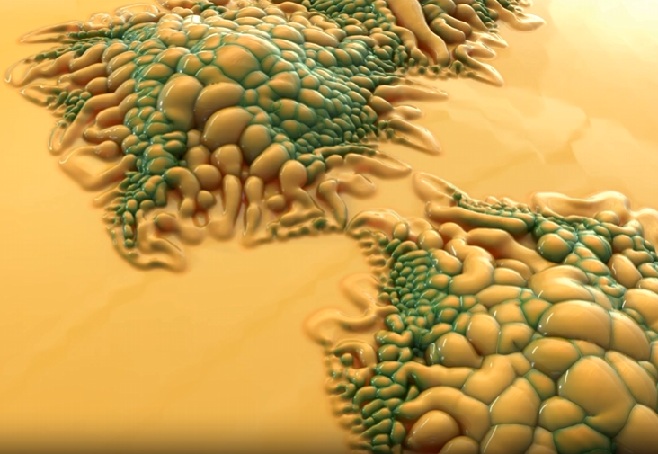
Image inspired by Martin Winkler. -
New Flow Block COPs that act like a 2D Fluid Solver.
-
New Chladni Cymatic Patterns COP that mixes two non-integer frequencies to generate interference patterns.
-
New Phasor Noise COP that generates phasor noises, such as an organic wave pattern.
-
New Bubble Noise COP that generates a bubbly noise pattern.
-
New Cloud Noise 3D COP that generates a billowy cloud noise pattern.
-
New Hyperbolic Tile COP that generates tiles formed by hyperbolic regular polygons.
-
New
Bend COP that bends and curves an image using pivot handles or a set captured region.
-
New Fetch COP that fetches the outputs of the selected COP and makes them available in the current network.
-
New Cache COP that builds an in-memory cache for each input to allow for faster playback.
-
New Color Correct COP that applies color corrections to an image.
-
New Convert Depth COP that converts depth layers to and from depth, distance, and height spaces.
-
New Convolve 3×3 COP that convolves the pixels of a layer.
-
New Copy and Transform COP that creates copies of the input stamp and applies transformations to the copies.
-
New Crystal Noise COP that generates a sharp and angular Worley noise type.
-
New Curvature COP that computes the curvature of the input layer.
-
New
Curve 3D COP that lets you interactively draw and edit Bézier curves.
-
New Defocus COP that defocuses a layer to mimic a real camera defocus.
-
New Fill Connected COP that fills the connected regions (pixels) of a layer with a constant value.
-
New Heat Distort and Heat Distort by Layer COPs that simulate heat around fire and other mirage effects.
-
New Height to Shadow COP that generates shadows using a virtual light source.
-
New HeightField Visualize COP that provides colored visualizations of layers as heightfields.
-
New Integrate Volume COP that integrates a VDB along camera rays.
-
New Invoke Geometry COP that runs a program, which is saved in a geometry, on the inputs.
-
New Lattice Deform COP that lets you apply grid-based deformation to an image.
-
New Layer Attribute Delete COP that removes user-defined metadata from a layer.
-
New Layer from Curves COP that constructs a layer from curves.
-
New Layer from VDB COP that samples float or vector VDBs into a layer, and VDB from Layer COP that initializes a VDB from the values in a layer.
-
New Layer to Points COP that creates points from the pixels in a layer.
-
New Layer to VDB Leaf Points COP that creates a point for each leaf of a VDB that would be in an envelope.
-
New Mask from Curves COP that creates a black and white mask from 2D curves.
-
New Match UDIM COP that reframes the pixels of a layer to match a particular UDIM tile.
-
New Pixelate COP that increases the size of the layer’s pixels.
-
New Position Sample COP that samples an input texture based on a position.
-
New Python Snippet COP that runs Python code on layers and geometry.
-
New Scatter Shapes COP that generates and scatters stamps across an image.
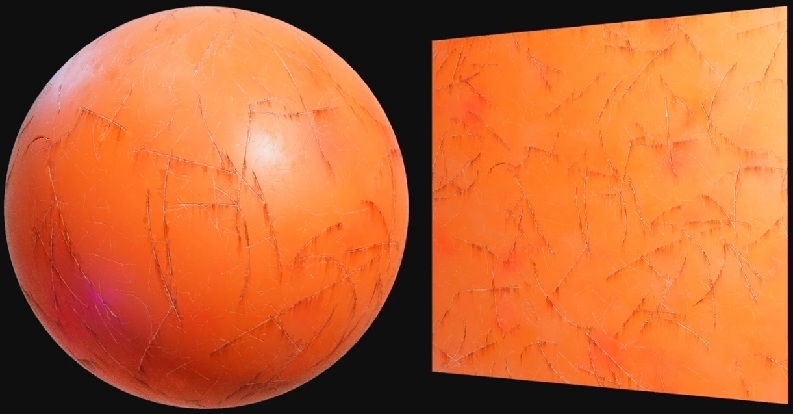
-
New Sharpen COP that applies an unsharp mask to a layer to sharpen it.
-
New SOP Invoke and SOP Invoke Graph COPs. The SOP Invoke COP streamlines the processing of geometry in a COP network (see Using SOPs from COPs).
-
New Space Transform COP that transforms position, vector, and UV values between different camera spaces.
-
New Stash COP that stashes the node’s inputs to use as the output.
-
New Surface Dither COP that applies halftone dithering.
-
New Tone Map COP that converts from high dynamic range real-world luminances to low dynamic range display values.
-
New Triplanar COP that generates a texture by projecting the X, Y, and Z textures onto the position layer.
-
New Triplanar Hex Tile COP that seamlessly textures large areas without visible repetitions in triplanar projections.
-
New Triplanar UV COP that generates UV-coordinates for X, Y, Z projections.
-
New Two Way Switch If Wired COP that selects between two inputs based on whether you wire in another input.
-
New VDB Activate from Points COP that takes multiple geometry inputs and activates leaves containing those points.
-
New VDB Leaf Points COP that creates a point for each active leaf in the incoming VDB.
-
New VDB Position Map COP that generates a vector VDB where each voxel stores the location of the voxel.
-
New VDB Reshape COP that recreates the source VDB with the reference VDB’s topology.
-
New VDB Visualize COP that creates multi-volume visualization.
-
New
VDB Visualize Slice COP that creates a mesh geometry of a slice of a VDB for visualization.
-
New VDB Visualize Tree COP that builds a geometry visualizing the topology of a VDB.
-
New VDB Visualize Velocity COP that visualizes a velocity VDB by tracing trails through it.
-
New Vector Transform 2D COP that transforms UV values in 2D space.
-
New Vignette COP that darkens the corners of the layer.
-
New Wipe COP that performs a wipe (a gradual transition from one image to another) between two input sequences.
Note
Although Flow Blocks and Pyro are in COPs, you need DOP level permissions to use them. This means that these features are available in Houdini FX, Houdini Apprentice, Houdini Indie, and Houdini Education. They are not available in Houdini Core.
Copernicus improvements ¶
-
Copernicus Python states now run in the Composite and Scene Views, and you can use the Operator Type Properties window to bind 2D and 3D handles to COP nodes.
Note
The Composite View doesn’t support 3D HUD handles for COP nodes.
-
New Copernicus Default Settings window that lets you set the network’s global resolution, precision, border, pixel scale, and VRAM settings. To open this window, click Edit ▸ Copernicus Settings.
-
The Geometry to Layer COP is now version 2.0 to support converting both 2D and 3D volumes into layers.
-
The Block End COP adds Simulate and Live Simulation related parameters that let you create feedback loops and interactive simulations.
-
The Fractal Noise and Fractal Noise 3D COPs add the
AlligatorNoise Type and Jitter/Worley Jitter parameter that provide more noise output options. These nodes also add parameters for post-processing. -
The Worley Noise and Worley Noise 3D COPs add parameters for post-processing.
-
Renders
Heighttypes for layers as heightfields in the Scene View, and as hillshades in the Composite View and preview thumbnail. -
Support for the Geometry Spreadsheet.
-
Support for VDB inputs and outputs, which include the Float, Integer, and Vector types.
-
Support for 2D tiling.
-
Flags on COP nodes have the following updates:
-
The Footprint flag is renamed to the Shaded Template flag.
-
Adds the 3D Output flag, which lets the 3D viewer display something different from the 2D viewer. ⌃ Ctrl +
a node’s display flag to turn on the 3D Output flag.
-
-
New image Filter List feature that’s a list of COP nodes to let you quickly apply effects in your scene without having to set up a COP network. Edit and rearrange nodes directly in the Filter List window. See Filter List for information about how to access and use Filter Lists.
-
The File COP has the following updates:
-
Improved performance for EXR files and faster OCIO conversion.
-
Support for the <UDIM> token (load a specific UDIM) and <LAYER> token (load multiple files at once).
-
Adds the UDIM parameter so you can set a specific UDIM that replaces any current <UDIM> token in the filename.
-
Adds the Load Camera parameter that loads camera information from the file metadata and then appropriately sets the layers' transform and camera.
-
Adds the Live Render LOP parameter that loads a live render from a Live Render LOP.
-
-
The ROP Image Output COP has the following updates:
-
Support for inputs, cables, and texture maps.
-
Support for the <UDIM> token (load a specific UDIM), <LAYER> token (load multiple files at once), and <F> and <F#> tokens (replace current frame number).
-
Adds the UDIM Range parameter so you can set a specific UDIM that replaces any current <UDIM> token in the filename.
-
Adds the Export Attributes and Attribute Filter parameters.
-
-
The Font COP adds Smoothing parameters to support anti-aliasing for rasterized curves.
-
The Derivative COP adds the
ForwardandDiagonalDifference Mode options that you can use to compute the derivatives. -
The Edge Detect COP adds the Normalize parameter. Turn this on to normalize the output result. This node also removes the Details parameter, and renames the
Cannymethod toThresholded Sobel. -
Faster interoperability with the Texture Mask Paint SOP.
-
Multiple COPs add the ability to enter a picker state (
and
) to select values directly in the viewport instead of entering them in the parameter editor.
-
The Blend COP adds the Compare Lengths parameter.
-
The Block to Geometry COP adds the Input States parameter.
-
The Bokeh COP adds the Normalize Gathered Light parameter.
-
The Camera Properties COP adds the Imaging Distance parameter.
-
The Denoise AI COP adds the Use CPU Only parameter.
-
The Edge Detect by Contour, Edge Detect by Depth, and Edge Detect by Normal COPs add the Edge Spread parameter and remove the Line Quality parameter.
-
The Layer Attribute Create COP adds the Type parameter.
-
The Layer to Geometry COP adds the Empty Geometry If Unwired parameter.
-
The Mirror COP adds the Reverse Mirror Plane Direction parameter.
-
The Mono to RGB COP adds the Scale by Value parameter.
-
The ONNX Inference COP adds the Execution Provider parameter and removes the Enable CUDA parameter.
-
The Position Map COP adds the Source Position parameter.
-
The Preview Material COP adds the Rotate, Remove Caps, and MikkT Tangent Space parameters.
-
The Rasterize Layer COP adds the Move to Origin parameter.
-
The SDF to Mono COP adds the Shadow Value parameter.
-
The Segment by Connectivity COP adds the Collapse IDs parameter.
-
The Z Composite COP adds the Convert Depth and FG Offset parameters.
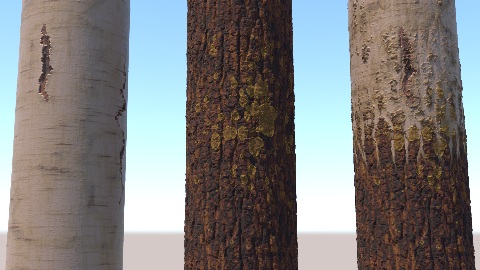
Expressions and scripting ¶
-
New expression functions:
-
copinputcablesize and copoutputcablesize that return the number of wires in a cable leading into a COP node’s input port or coming out of a COP node’s output port.
-
copinputtype and copoutputtype that return the type information of a COP node’s input or output port.
-
copinputisnull and copoutputisnull that check for data flowing into a COP node’s input port or out of a COP node’s output port.
-
-
New classes and HOM functions for Python scripts:
-
hou.CopCableStructure that captures the names and data types of wires in a Copernicus cable.
-
hou.CopNode that represents a COP node.
-
hou.CopVerb that represents a COP node’s code.
-
hou.ImageLayer that contains pixels to define a 2D image layer.
-
hou.NanoVDB that contains voxels to define a sparse 3D VDB volume.
-
hou.copNodeTypeCategory that returns the NodeTypeCategory instance for COP nodes.
-
-
New copcache HScript command that lets you clear your GPU and memory usage. See Clear GPU and memory usage for information about how to use this command.
Content library examples ¶
|
The Houdini 21 splash screen project demonstrates the Flow Solver working in synergy with both SOP and DOP contexts. It shows how you can generate organic, intricate velocity fields in just a few minutes and then apply that data across different areas of Houdini. Download the file here. |
|---|---|
|
The Coral Synapse project explores creative workflows with Houdini’s Flow Solver, focusing on its interaction with Reaction–Diffusion systems. The setup demonstrates how to generate interesting reaction diffusion patterns to add layered detail and variation in your final shader. Download the file here. |

